#Achaemenid Dynasty
Text
History of Achaemenid Iran 1A, Course I - Achaemenid beginnings 1A
Prof. Muhammad Shamsaddin Megalommatis
Tuesday, 27 December 2022
Outline
Introduction; Iranian Achaemenid historiography; Problems of historiography continuity; Iranian posterior historiography; foreign historiography; Western Orientalist historiography; early sources of Iranian History; Prehistory in the Iranian plateau and Mesopotamia

1- Introduction
Welcome to the 40-hour seminar on Achaemenid Iran!
It is my intention to deliver a rather unconventional academic presentation of the topic, mostly implementing a correct and impartial conceptual approach to the earliest stage of Iranian History. Every subject, in and by itself, offers to every researcher the correct means of the pertinent approach to it; due to this fact, the personal background, viewpoints and thoughts or eventually the misperceptions and the preconceived ideas of an explorer should not be allowed to affect his judgment.
If before 200 years, the early Iranologists had the possible excuse of studying a topic on the basis of external and posterior historical sources, this was simply due to the fact that the Old Achaemenid cuneiform writing had not yet been deciphered. Still, even those explorers failed to avoid a very serious mistake, namely that of taking the external and posterior historical sources at face value. We cannot afford to blindly accept a secondary historical source without first examining intentions, motives, scopes and aims of it.
As the seminar covers only the History of the Achaemenid dynasty, I don't intend to add an introductory course about the History of the Iranian Studies and the re-discovery of Iran by Western explorers of the colonial powers. However, I will provide a brief outline of the topic; this is essential because mainstream Orientalists have reached their limits and cannot provide us with a real insight, eliminating the numerous and enduring myths, fallacies, and deliberately naïve approaches to Achaemenid Iran.
In fact, most of the specialists of Ancient Iran never went beyond the limitations set by the delusional Ancient 'Greek' (in reality: Ionian and Attic) literature about the Medes and the Persians (i.e. the Iranians), because they never offered themselves the task to explain the reasons for the aberration that the Ancient Ionian and Attic authors created in their minds and wrote in their texts about Iran. This was utterly puerile and ludicrous.
And this brings us to the other major innovation that I intend to offer during this seminar, namely the proper, comprehensive contextualization of the research topic, i.e. the History of Achaemenid Iran. To give some examples in this regard, I would mention
a - the tremendous, multilayered and multifaceted impact of the Mesopotamian World, Civilization and Heritage on the formation of the Achaemenid Empire of Iran, and more specifically, the determinant role played by the Sargonid Empire of Assyria on the emergence of the first Empire on the Iranian plateau;
b - the ferocious opposition of the Mithraic Magi to the Zoroastrian Achaemenid court;
c - the involvement of the Anatolian Magi in the misperception of Iran by the Ancient Greeks; and
d- the utilization of the Ancient Greek cities by the Anti-Iranian side of the Egyptian priesthoods, princes and administrators.
To therefore introduce the proper contextualization, I will expand on the Neo-Assyrian Empire and the Sargonid times, not only to state the first mentions of the Medes and the Persians in History, but also to show the importance attributed by the Neo-Assyrian Emperors to the Zagros Mountains and the Iranian plateau, as well as the numerous peoples, settled or nomadic, who inhabited that region.
There is an enormous lacuna in the Orientalist disciplines; there are no interdisciplinary studies in Assyriology and Iranology. This plays a key role in the misperception of the ancient oriental civilizations and in the mistaken evaluation (or rather under-estimation) of the momentous impact that they had on the formation of the World History. There are no isolated cultures and independent civilizations as dogmatic and ignorant Western archaeologists pretend.
Only if one studies and evaluates correctly the colossal impact of the Ancient Mesopotamian world on Iran, can one truly understand the Achaemenid Empire in its real dimensions.
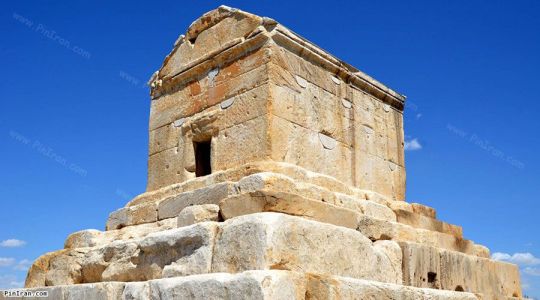
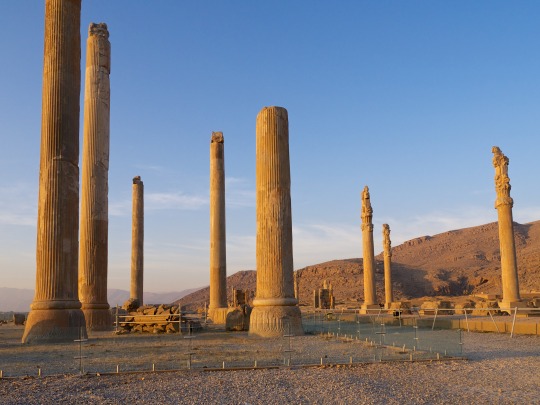

2- Iranian Achaemenid historiography
A. Achaemenid imperial inscriptions produced on solemn occasions
Usually multilingual texts written by the imperial scribes of the emperors Cyrus the Great, Darius I the Great, Xerxes I, Artaxerxes I, Darius II, Artaxerxes II, and Artaxerxes III, as well as of the ancestral rulers Ariaramnes and Arsames.
Languages and writing systems:
- Old Achaemenid Iranian (cuneiform-alphabetic; the official imperial language)
- Babylonian (cuneiform-syllabic; to offer a testimony of historical continuity and legitimacy, following the Conquest of Babylon by Cyrus the Great, who presented himself as king of Babylon)
- Elamite (cuneiform-logo-syllabic; to portray the Persians in particular as the heirs of the ancient land of Anshan and Sushan that the Assyrians and the Babylonians named 'Elam' and the indigenous population called 'Haltamti' / The first Achaemenid to present himself as 'king of Anshan' is Cyrus the Great and the reference is found in his Cylinder unearthed in Babylon.)
and
- Egyptian Hieroglyphic (if the inscription or the monument was produced in Egypt, since the Achaemenids were also pharaohs of Egypt, starting with Kabujiya/Cambyses)
Imperial inscriptions are found in: Babylon (Cyrus Cylinder), Pasargad, Behistun, Hamadan, Ganj-e Nameh, Persepolis, Naqsh-e Rustam, Susa, Suez (Egypt), Gherla (Romania), Van (Turkey), and on various items
B. Persepolis Administrative Archives
This consists in an enormous documentation that has not yet been fully studied; it is not written in Old Achaemenid as one could expect but mainly in Elamite cuneiform. It consists of two groups, namely
- the Persepolis Fortification Archive, and
- the Persepolis Treasury Archive.
The Persepolis Fortification Archive was unearthed in the fortification area, i.e. the northeastern confines of the enormous platform of the Achaemenid capital Parsa (Persepolis), in the 1930s. It comprises of more than 30000 tablets (fragmentary or entire) that were written in the period 509-494 BCE (at the time of Darius I). The tablets were written in Susa and other parts of Fars and the territory of the ancient kingdom of Elam that vanished in the middle of the 7th c. (more than 130 years before these texts were written). Around 50 texts had Aramaic glosses. More than 2000 tablets have been published and translated. These texts are records of transactions, distribution of food, provisioning of workers, transportation of commodities, etc.; few tablets were written in other languages, namely Old Iranian (1), Babylonian (1), Phrygian (1) and Greek (1).
The Persepolis Treasury Archive was found in the northeastern room of the Treasury of Xerxes. It contains more than 750 tablets and fragments (in Elamite) and more than 100 have been published. They all date back in period 492-458 BCE. These tablets are either letters or memoranda dispatched by imperial officials to the head of the Treasury; they concern the payment of workmen, the issue of silver, and other administrative procedures. Only one tablet was written in Babylonian.
The entire documentation offers valuable information as regards the function of various imperial services, namely the couriers, the satraps, the imperial messengers, the imperial storehouse, etc. The archives shed light on the origin of the imperial administrators, as ca. 1900 personal names have been recorded: 10% were Elamites (who had apparently survived for long far from their country after the destruction of Susa by Assurbanipal (640 BCE), fewer were Babylonians, and the outright majority consisted of Iranians (Persians, Medes, Bactrians, Sakas, Arians, etc.).
C. Imperial Aramaic
The diffusion of the use of Aramaic started already in the Neo-Assyrian times and during the 7th c. BCE; the creation of the 'Royal Road', the systematization of the transportation, the improvement of communications, and the formation of the network of land-, sea- and desert routes that we now call 'Silk-, Spice- and Perfume- Road' during the Achaemenid times helped further expand the use of Aramaic. The linguistic assimilation of the Babylonians, the Jews and the Phoenicians with the Aramaeans only strengthened the diffusion of the Aramaic, which became the second international language ('lingua franca') in the History of the Mankind (after the Akkadian / Assyrian-Babylonian). Gradually, Aramaic became an official Achaemenid language after the Old Achaemenid Iranian.
Except the Aramaic texts attested in the Persepolis Administrative Archives, thousands of Aramaic texts of the Achaemenid times shed light onto the society, the economy, the administration, the military organization, the trade, the religions, the cults, the culture and the spirituality attested in various provinces of the Iranian Empire. At this point, only indicatively, I mention few significant groups of texts:
- the Elephantine papyri and ostraca (except Aramaic, they were written in Hieratic and Demotic Egyptian, Coptic, Alexandrian Koine, and Latin) – 5th and 4th c. BCE,
- the Hermopolis Aramaic papyri,
- the Padua Aramaic papyri, and
- the Khalili Collection of Aramaic Documents from Bactria (48 texts written on leather, papyrus, stone or clay, dating from the period 353-324 BCE, and mainly from the reign of Artaxerxes III whereas the most recent dates from the reign of Alexander the Great).
Here I have to add that the widespread use of Imperial Aramaic and its use as a second official language for Achaemenid Iran brought an end to the use of the Elamite (in the middle of the 5th c.) and, after the end of the Achaemenid dynasty and the split of the state of Alexander the Great, contributed to the formation of two writing systems, namely Parthian and Pahlavi which were in use during the Arsacid and the Sassanid times. Imperial Aramaic helped establish many other writing systems, but this goes beyond the limits of the present seminar.

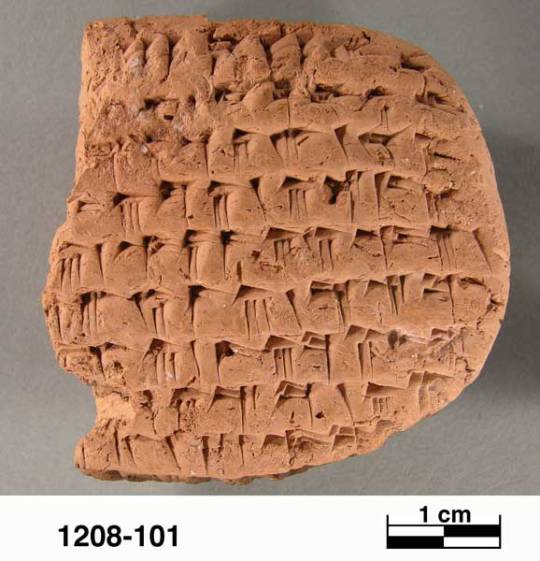
3- Problems of historiography continuity
There are no historical references to the Achaemenid dynasty made at the time of the Arsacids (Ashkanian: 250 BCE-224 CE) and the Sassanids 224-651 CE); this situation is due to many factors:
- the prevalence of another Iranian nation of probably Turanian origin, namely the Parthians and the Arsacid dynasty,
- the rise of the anti-Achaemenid, anti-Zoroastrian Magi who tried to impose Mithraism throughout Iran during the Arsacid times,
- the formation of an oral epic tradition and the establishment of a legendary historiography about the pre-Arsacid past during the Sassanid times, and
- the scarcity of written sources and the terrible destructions that occurred in Iran during the Late Antiquity, the Islamic era, and the Modern times (early Islamic conquests, divisions of the Abbasid times, Mongol invasions, Safavid-Ottoman wars, Western colonial looting, etc.).
This situation raised Western academic questions of Iranian identity, continuity, and historicity. But this attempt is futile. Iranian historiography of Islamic times shows that these questions were fully misplaced.

4- Iranian posterior historiography (Iranian historiography of Islamic times)
With Tabari (839-923) and his voluminous History of Prophets and Kings we realize that there were, in spite of the destructions caused because of the Islamic conquests, historical documents on which he was based to expand about the Sassanid dynasty; actually one out of the 40 volumes of the most recent translation of Tabari to English (published by the State University of New York Press from 1985 through 2007) is dedicated to the History of Sassanid Iran (vol. 5). And the previous volume (vol. 4) covers the History of Achaemenid and Arsacid Iran, Alexander the Great, Nabonid Babylonia, Assyria and Ancient Israel and Judah.
Other important Iranian historians of the Islamic times, like Abu'l-Fadl Bayhaqi (995-1077), Rashid al-Din Hamadani (1247-1318) who wrote the truly first World History, Alaeddin Aṭa Malik Juvaynī (1226-1283), and Sharaf ad-Din Ali Yazdi (ca. 1370-1454), did not expand much on pre-Islamic periods as the focus of their writing was on contemporaneous developments.
However, the aforementioned historians and all the authors, who are classified in this category, represent only one dimension of Iranian historiography of Islamic times. A totally different approach and literature have been illustrated by Ferdowsi's Shahnameh (Book of Kings). Abu 'l Qasem Ferdowsi (940-1025) was not the first to compose an epic in order to standardize in mythical terms and legendary concepts the pre-Islamic Iranian past; but he was the most successful and the most illustrious. That is why many other epic poets followed his example, notably the Azeri Nizami Ganjavi (1141-1209) and the Turkic Indian Amir Khusraw (1253-1325).
Within the context of this poetical historiography, historical emperors of pre-Islamic Iran appear as legendary figures only to be then viewed as materialization of divine patterns. The origin of this transcendental historiography seems to be retraced in the Sassanid times, but all the major themes are clearly of Zoroastrian identity and can therefore be attributed to the Achaemenid world perception and world conceptualization.
It is essential at this point to state that, until the imposition of modern Western colonial academic and educational standards in Iran, Ferdowsi's Shahnameh and the corpus of Iranian legendary historiography was the backbone of the Iranian cultural, intellectual and educational identity.
It is a matter of academic debate whether an original text named Khwaday-Namag, written during the Sassanid times, and now lost, is at the very origin of Ferdowsi's Shahnameh and of the Iranian legendary historiography. The 19th c. German Orientalist Theodor Nöldeke is credited with this theory that has not yet been proved.
All the same, the spiritual standards of this approach are detected in the Achaemenid times.

5- Foreign historiography
Ancient Greek (in reality, Ionian and Attic), Ancient Hebrew and Latin sources of Achaemenid History exist, but first they are external, second they appear to be posterior in their largest part, and third they often bear witness to astounding inaccuracies, fables, untrustworthy data, misplaced focus, excessive verbosity without real substance, and -above all- an enormous and irreconcilable misunderstanding of the Iranian Achaemenid reality, values, world view, mindset, and behavior.
The Ancient Hebrew sources shed light on issues that were apparently critical to the tiny and unimportant, Jewish minority of the Achaemenid Empire; however, these Biblical narratives concern facts that were absolutely insignificant to the imperial authorities of Parsa. One critical issue is concealed by modern scholars though; although all the nations of the Empire were regularly mentioned in the Achaemenid inscriptions and depicted on bas reliefs, the Jews were not. This undeniable fact irrevocably conditions the supposed 'importance' of Biblical texts like Ezra, Esther, Nehemiah, etc. All the same, these foreign historical sources are important for the Jews.
The Ionian and Attic accounts of events that were composed by the Carian renegade Herodotus, the Dorian Ctesias, and the Athenian Xenophon present an even more serious problem. They happened to be for many centuries (16th – 19th c.) the bulk of the historical documentation that Western European academics had access to as regards Achaemenid Iran. This situation produced grave biases among Western academics, because they took all these sources at face value since they had no access to original documentation. The grave trouble persisted even after the decipherment of the Old Achaemenid cuneiform writing and the archaeological excavations that brought to daylight original Iranian imperial documentation.
Only recently, at the end of the 20th c., leading Iranologists like Heleen Sancisi-Weerdenburg started criticizing the absolutely delusional History of Achaemenid Iran that modern Western scholars were producing without even understanding it by foolishly accepting Ancient Ionian myths, lies and propaganda against the Iranian Empire at face value. This grave problem had also two other parameters:
- first, there was an enormous gap of civilization and a tremendous cultural difference between the Iranian imperial world view, the spiritual valorization of the human being, and the Zoroastrian monotheism from one side and the chaotic, disorderly and profane elements of the western periphery of the Empire. The so-called Greek tribes in Western Anatolia and in the South Balkans were not only multi-divided and plunged in permanent conflict; they were also extremely verbose on common issues, they desecrated the divine world with their nonsensical myths and puerile narratives, and they defiled human spirituality with their love stories about their pseudo-gods. But, very arbitrarily and quite disastrously, the so-called Ancient Greek civilization had been erroneously taken as 'classics' by modern Europeans at a time they had no access to Ancient Oriental sources.
- second, the vertical differentiation between Imperial Iran as the blessed land of divine mission and the disunited and peripheral lands of conflict, discord and strife that were inhabited by the Greek tribes was reflected on the respective, impressively different types of historiography; to the Iranians, few words written by anonymous scribes were enough to describe the groundbreaking deeds of divinely appointed rulers. But for the Greeks, the useless rumors, the capricious hearsay, the intentional lie, the nefarious expression of their complex of inferiority, the vicious slander, and the deliberate ignominy 'had' to be recorded and written down.
The fact that Herodotus' and Xenophon's long narratives have long been taken as the basic source of information about Achaemenid Iran demonstrates how disoriented and misplaced modern Western scholarship is. But by preferring to rely mainly on the Ancient Greek lengthy and false narratives, and not on the succinct, true and chaste Old Achaemenid Iranian inscriptions, they totally misrepresent Ancient Iranian History, preposterously extrapolating later and corrupt standards to earlier and superior civilizations.
And whereas Ancient Roman authors, who wrote in Latin (Pliny the Elder, Seneca the Younger, etc.), and Jewish or Christian historians, who wrote in Alexandrine Koine, like Flavius Josephus and Eusebius of Caesarea Maritima, reproduced the style of lengthy narratives that turns History to mere gossip, the great Babylonian scholar Berossus was very reluctant to add personal comments to his original sources or to allow subjective considerations and thoughts to contaminate his text.
In any case, the vast issue of the multilayered damages caused by the untrustworthy Ancient Greek historiography to modern Western academics' perception and interpretation of Achaemenid Iran is a topic that deserves an entirely independent seminar.

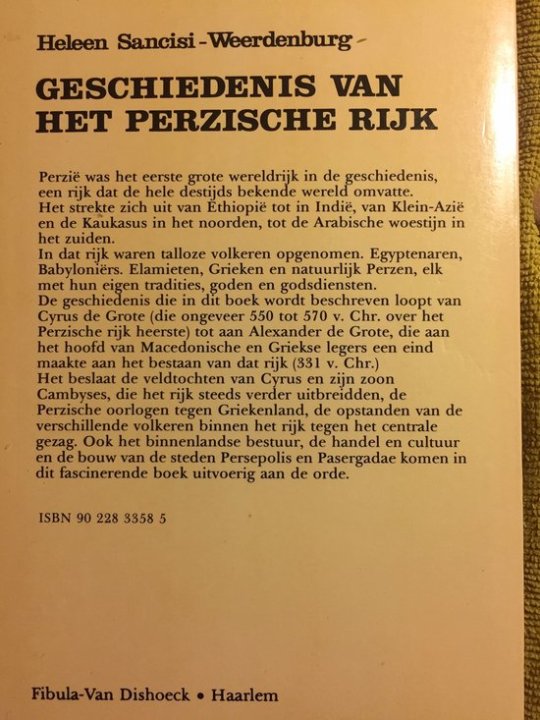
--------------
To watch the video (with more than 110 pictures and maps), click the links below:
HISTORY OF ACHAEMENID IRAN - Achaemenid beginnings 1Α
By Prof. Muhammad Shamsaddin Megalommatis
youtube
------------------------
To listen to the audio, clink the links below:
HISTORY OF ACHAEMENID IRAN - Achaemenid beginnings 1 (a+b)
------------------------------
Download the text in PDF:
#Achaemenid dynasty#Achaemenid History#Ariaramnes#Arsacid#Arsames#Artaxerxes I#Artaxerxes II#Artaxerxes III#Assyria#Assyriology#Babylon#Babylonia#Babylonian#Berossus#Cambyses#Ctesias#cuneiform#Cyrus the Great#Darius I the Great#Darius II#Elam#Elamite#Elephantine papyri#Esther#Ezra#Ferdowsi#Ganj-e Nameh#Gherla#Hamadan#Heleen Sancisi-Weerdenburg
3 notes
·
View notes
Text

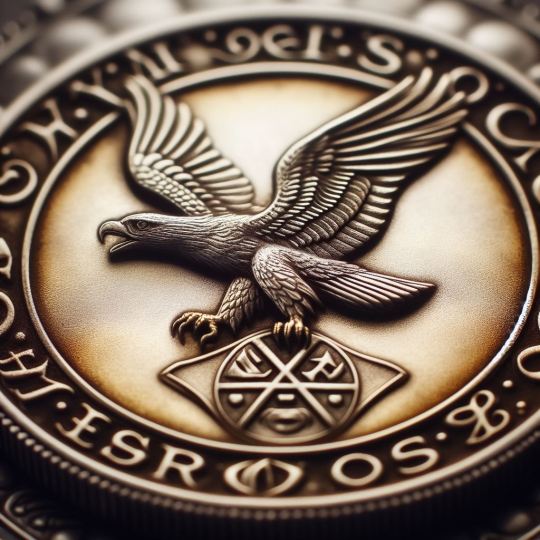
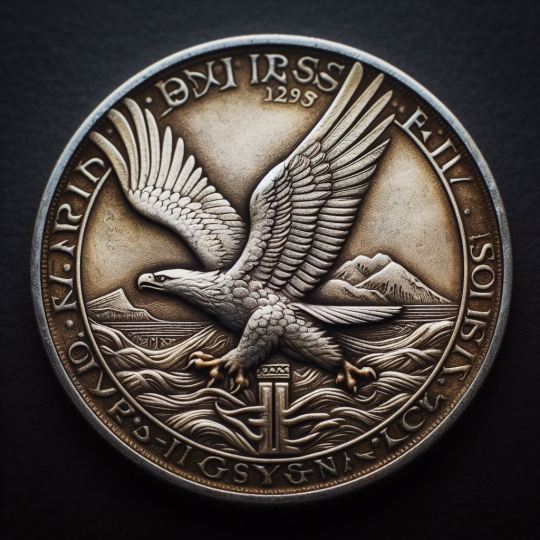

#AI#生成AI#AIart#AIイラスト#bingimagecreator#DALLE#AIArtworks#illust#AI画像#illustration#dalle3#aiart#openai#シグロス銀貨#Siguros silver coin#アケメネス朝#Achaemenid Dynasty
0 notes
Text
From the Han Dynasty to the Achaemenids, ancient Asia was home to many successful monarchies. These rulers shaped the region’s cultures and traditions for countless generations.
12 notes
·
View notes
Text
my racist grandmother, who tells me that “the eye-rain-ians” are dirty and nasty and cheap snd never passes up the chance to talk about how much she hates Iranians—even tho i am literally half Iranian—gave me some amazon giftcards for my bday, and im using them to buy persian history books in order to write a historical fiction story based in the ancient persian empire with all iranian characters 💜💜💜💜💜
#ray ray cray cray#not sure if the story should be set in the achaemenid dynasty or the sasanid#achaemenid would be fucking crazy and require sooooo much research. but. Purrhaps#im leaning more towards Sasanid but we Shall See#and also when i say all iranian i do mean middle eastern and mediterranean in this context bc the empires did stretch over those areas#my point being that basically it will be everything she hates 💜#edit: sasanian not sasanid lol
3 notes
·
View notes
Text
#a s fischer original#jewish#jumblr#i know the answer#demonstrating something about Jewish cultural memory gentiles might not be aware of
2K notes
·
View notes
Text

Stater, minted 380/379 BCE at Tarsus in Cilicia, of Pharnabazus II, former satrap of Hellespontine Phrygia under the Achaemenid dynasty of Persia and a major figure in the internecine conflicts of the Greek city-states during the late 5th/early 4th centuries. The coin shows the complex intermingling of Greek and Near Eastern cultures characteristic of Anatolia under Achaemenid rule. On the obverse, Ba'al of Tarsus is shown seated, holding a lotus-tipped scepter and wearing the Greek chlamys. On the reverse, a bearded man wears a helmet in Attic style. Both sides are inscribed in Aramaic, which served as the lingua franca of the Near East under the Achaemenids. Photo credit: Classical Numismatic Group, Inc. http://www.cngcoins.com
#history#ancient history#classics#tagamemnon#Persian Empire#Achaemenid#coins#ancient coins#Persian coins#numismatics#ancient numismatics#artifacts#artefacts
86 notes
·
View notes
Text
Pub Quiz
People hated it when Mr Stevenson was in the pub during the pub quiz. He was an unpleasant, smug smart-ass. As a teacher at the exclusive public school, he definitely felt like something better. His greasy hair, shapeless figure and old-fashioned clothes did nothing to change that. Mr. Stevenson was simply an unsympathetic person in every respect. And that was why all the visitors to the pub had decided that something had to change. Something fundamental.
"Which ruler founded the Achaemenid dynasty?" asked the moderator of the quiz duel. And again, Mr. Stevenson answered smugly as well as recklessly, "Achaimenes, of course. Otherwise it wouldn't be the Achaemenids, would it?"
"Congratulations!" exclaimed the bartender. "There's a special prize for answering that question!" He handed Mr Stevenson a polo shirt. "Would you do us the pleasure of trying it on right away?"
Even more than showing other people how stupid they were, it pleased Mr Stevenson to get something for nothing. He had also been delighted to get his apple juice for free after the bartender had stained his already coffee-stained shirt while pouring it. Perhaps it was quite appropriate to put on a fresh polo shirt now.
Mr. Stevenson took the polo shirt without a thank you, went to the toilet, took off his shirt and put the polo shirt on over his old stained vest. But instead of the vest, there was suddenly a heavy silver chain. And the rest of his clothes changed too.
"'Can I take a piss right now,' Buck thought to himself. He unbuttoned his jeans and took his magnificent cock out of his jockstrap. On his way back to the bar he was annoyed that it was the pub quiz again. Then the pub was full of arrogant know-it-alls. He was here to have a beer and watch football. He was a caretaker at the community school and the captain of the local rugby team. He didn't need to know all that shit.

"What name was the King's grandmother known by," was the next question. "The Rottweiler?" wondered Buck. He had no idea. Hopefully the other lads from his rugby team would arrive soon, then they could at least enjoy the evening having a beer or two.
And again, a post by @stargazerguy was the motivation!
187 notes
·
View notes
Text



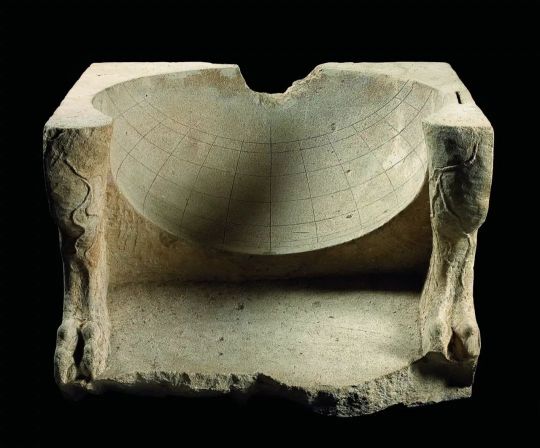
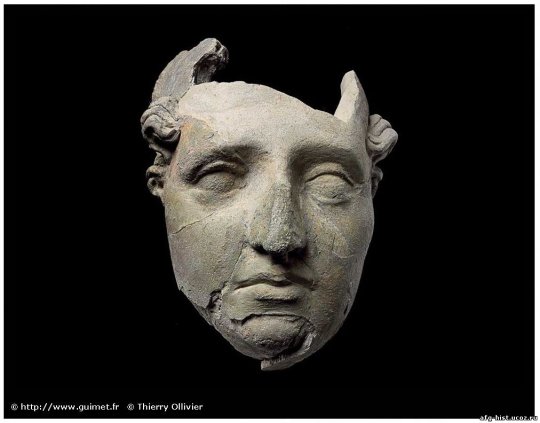
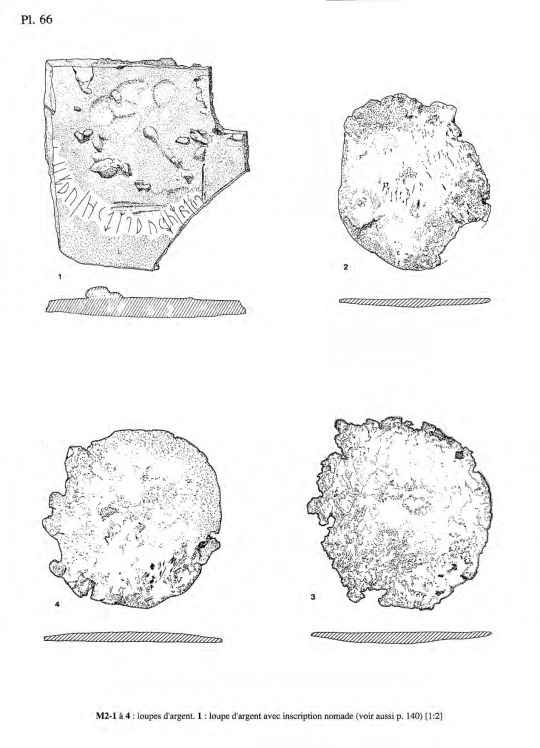
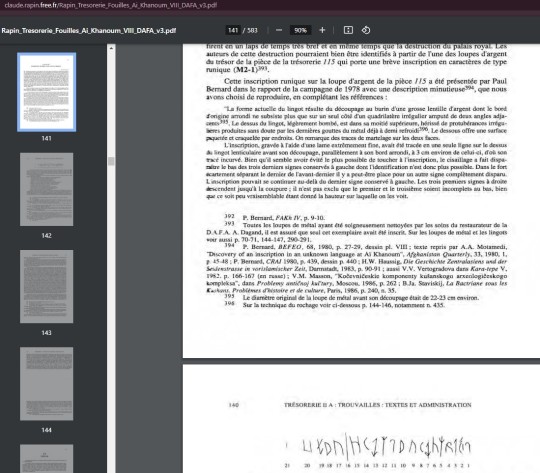
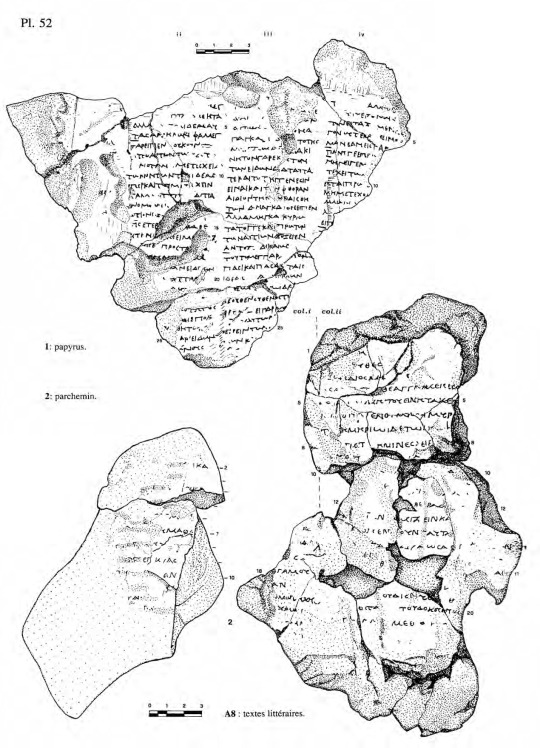
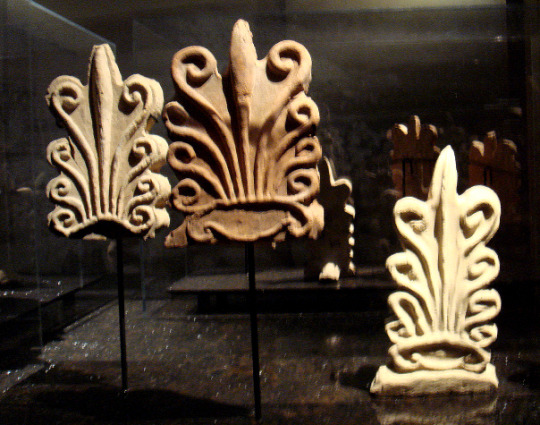





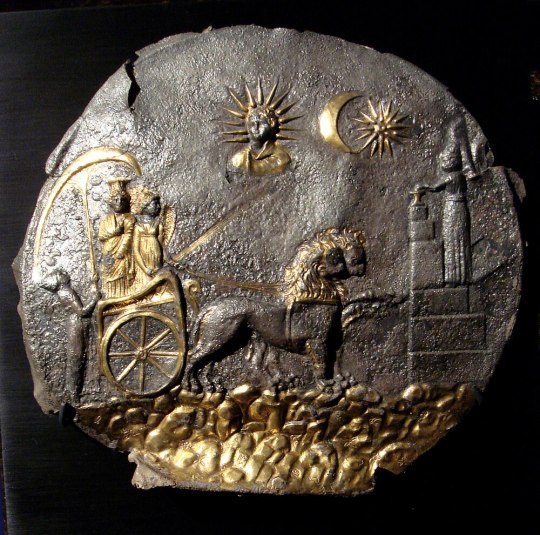

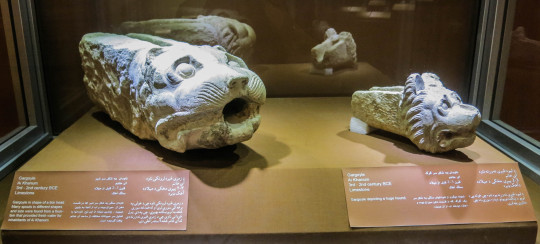

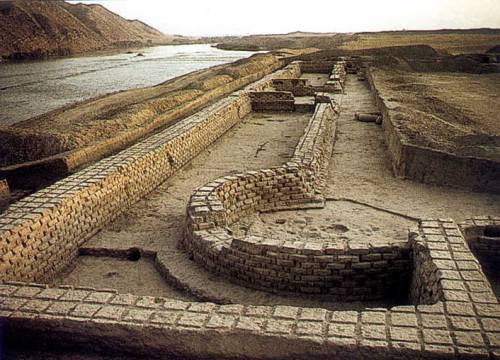



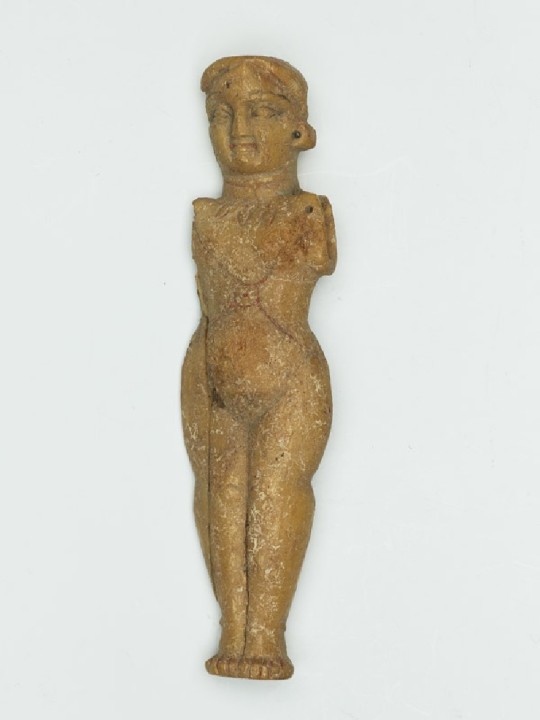





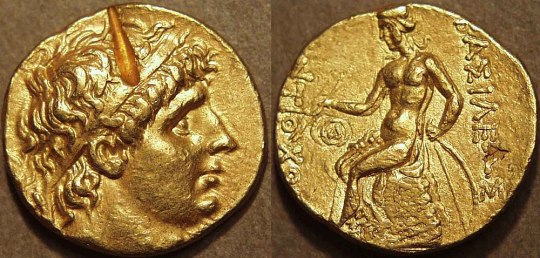

Ai Khanoum 3rd C. BCE - 2nd C. CE. More images on my blog, link at bottom.
"These wise sayings of men of old,
The words of famous men, are consecrated
At holy Delphi, where Klearchos copied them from carefully
To set them up, shining from afar, in the sanctuary of Kineas.
As a child, be well behaved;
As a young man, self-controlled;
In middle age, be just;
As an elder, be of good counsel;
And when you come to the end, be without grief.
—trans. of Ai Khanoum stele by Shane Wallace and Rachel Mairs.
Ai-Khanoum (/aɪ ˈhɑːnjuːm/, meaning Lady Moon; Uzbek Latin: Oyxonim) is the archaeological site of a Hellenistic city in Takhar Province, Afghanistan. The city, whose original name is unknown, was likely founded by an early ruler of the Seleucid Empire and served as a military and economic centre for the rulers of the Greco-Bactrian Kingdom until its destruction c. 145 BC. Rediscovered in 1961, the ruins of the city were excavated by a French team of archaeologists until the outbreak of conflict in Afghanistan in the late 1970s.
The city was probably founded between 300 and 285 BC by an official acting on the orders of Seleucus I Nicator or his son Antiochus I Soter, the first two rulers of the Seleucid dynasty. There is a possibility that the site was known to the earlier Achaemenid Empire, who established a small fort nearby. Ai-Khanoum was originally thought to have been a foundation of Alexander the Great, perhaps as Alexandria Oxiana, but this theory is now considered unlikely. Located at the confluence of the Amu Darya (a.k.a. Oxus) and Kokcha rivers, surrounded by well-irrigated farmland, the city itself was divided between a lower town and a 60-metre-high (200 ft) acropolis. Although not situated on a major trade route, Ai-Khanoum controlled access to both mining in the Hindu Kush and strategically important choke points. Extensive fortifications, which were continually maintained and improved, surrounded the city.
Many of the present ruins date from the time of Eucratides I, who substantially redeveloped the city and who may have renamed it Eucratideia, after himself. Soon after his death c. 145 BC, the Greco-Bactrian kingdom collapsed—Ai-Khanoum was captured by Saka invaders and was generally abandoned, although parts of the city were sporadically occupied until the 2nd century AD. Hellenistic culture in the region would persist longer only in the Indo-Greek kingdoms.
It is likely that Ai-Khanoum was already under attack by nomadic tribes when Eucratides was assassinated in around 144 BC. This invasion was probably carried out by Saka tribes driven south by the Yuezhi peoples, who in turn formed a second wave of invaders, in around 130 BC. The treasury complex shows signs of having been plundered in two assaults, fifteen years apart.
Although the first assault led to the end of Hellenistic rule in the city, Ai-Khanoum continued to be inhabited; it remains unknown whether this reoccupation was effected by Greco-Bactrian survivors or nomadic invaders. During this time, public buildings such as the palace and sanctuary were repurposed as residential dwellings and the city maintained some semblance of normality: some sort of authority, possibly cultish in origin, encouraged the inhabitants to reuse the raw building materials now freely available in the city for their own ends, whether for construction or trade. A silver ingot engraved with runic letters and buried in a treasury room provides support for the theory that the Saka occupied the city, with tombs containing typical nomadic grave goods also being dug into the acropolis and the gymnasium. The reoccupation of the city was soon terminated by a huge fire. It is unknown when the final occupants of Ai-Khanoum abandoned the city. The final signs of any habitation date from the 2nd century AD; by this time, more than 2.5 metres (8.2 ft) of earth had accumulated in the palace.
While on a hunting trip in 1961, the King of Afghanistan, Mohammed Zahir Shah, rediscovered the city. An archaeological delegation, led by Paul Bernard, unearthed the remains of a huge palace in the lower town, along with a large gymnasium, a theatre capable of holding 6,000 spectators, an arsenal, and two sanctuaries. Several inscriptions were found, along with coins, artefacts, and ceramics. The onset of the Soviet-Afghan War in the late 1970s halted scholarly progress and during the following conflicts in Afghanistan, the site was extensively looted."
-taken from Wikipedia
...
"The silver ingot engraved with runic characters found during the excavations of the Treasury could suggest they were Sakā/Sai. This inscription comprises 21 characters of a script and a language that are unknown and both attributed to nomadic people of Sakā origin, by comparison with a dozen similar inscriptions coming from an area extending from Ghazni in Afghanistan to Almaty in Kazakhstan, and dated between the 5th century BC and the 8th century AD."
-taken from Ai Khanoum after 145 BC: The Post-Palatial Occupation by Laurianne Martinez-Sève, University of Lille, 2018
#ancient history#antiquities#art#paganism#statue#museums#sculpture#history#greek art#greek gods#ancient greek#greek myth#scythian#pagan#ancient art#afghanistan
186 notes
·
View notes
Text
Countries that are no more: Achaemenid Empire (550BC-330BC)
It was not the first empire of Iranian peoples, but it arose as probably the greatest in terms of influence and became the measure by which all subsequent Iranian empires tended to compare themselves and its influence on culture, government & civil infrastructure would influence others beyond the span of its territory and the span of time. This is the Achaemenid Empire.
Name: In Old Persian it was known as Xšāça or the "The Kingdom or the Empire", it was named the Achaemenid Empire by later historians. Named after the ruling dynasty established by its founder Cyrus the Great who cited the name of his ancestor Haxāmaniš or Achaemenes in Greek as progenitor of the dynasty. It is sometimes also referred to as the First Persian Empire. The Greeks simply referred to it as Persia, the name which stuck for the geographic area of the Iranian plateau well into the modern era.
Language: Old Persian & Aramaic were the official languages. With Old Persian being an Iranian language that was the dynastic language of the Achaemenid ruling dynasty and the language of the Persians, an Iranian people who settled in what is now the southwestern Iranian plateau or southwest Iran circa 1,000 BC. Aramaic was a Semitic language that was the common and administrative language of the prior Neo-Assyrian & Neo-Babylonian Empires which centered in Mesopotamia or modern Iraq, Syria & Anatolian Turkey. After the Persian conquest of Babylon, the use of Aramaic remained the common tongue within the Mesopotamian regions of the empire, eventually becoming a lingua franca across the land. As the empire spread over a vast area and became increasingly multiethnic & multicultural, it absorbed many other languages among its subject peoples. These included the Semitic languages Akkadian, Phoenician & Hebrew. The Iranian language of Median among other regional Iranian languages (Sogdian, Bactrian etc). Various Anatolian languages, Elamite, Thracian & Greek among others.
Territory: 5.5 million kilometers squared or 2.1 million square miles at its peak circa 500BC. The Achaemenid Empire spanned from southern Europe in the Balkans (Greece, Bulgaria, European Turkey) & northwest Africa (Egypt, Libya & Sudan) in the west to its eastern stretches in the Indus Valley (Pakistan) to parts of Central Asia in the northeast. It was centered firstly in the Iranian Plateau (Iran) but also held capitals in Mesopotamia (Iraq). Territory was also found in parts of the Arabian Peninsula & the Caucausus Mountains.
Symbols & Mottos: The Shahbaz or Derafsh Shahbaz was used as the standard of Cyrus the Great, founder of the empire. It depicts a bird of prey, typically believed to be a falcon or hawk (occasionally an eagle) sometimes rendered gold against a red backdrop and depicts the bird holding two orbs in its talons and adorned with an orb likewise above its head. The symbolism was meant to depict the bird guiding the Iranian peoples to conquest and to showcase aggression & strength coupled with dignity. The imperial family often kept falcons for the pastime of falconry.
Religion: The ancient Iranian religion of Zoroastrianism served as the official religion of the empire. It was adopted among the Persian elite & and had its unique beliefs but also helped introduce the concept of free-will among its believers, an idea to influence Judaism, Christianity & Islam in later centuries. Despite this official religion, there was a tolerance for local practices within the subject regions of the empire. The ancient Mesopotamian religion in Babylon & Assyria, Judaism, the Ancient Greek & Egyptian religions & Vedic Hinduism in India was likewise tolerated as well. The tolerance of the Achaemenids was considered a relative hallmark of their dynasty from the start. Famously, in the Old Testament of the Bible it was said that it was Cyrus the Great who freed the Jews from their Babylonian captivity and allowed them to return to their homeland of Judea in modern Israel.
Currency: Gold & silver or bimetallic use of coins became standard within the empire. The gold coins were later referred to as daric and silver as siglos. The main monetary production changes came during the rule of Darius I (522BC-486BC). Originally, they had followed the Lydian practice out of Anatolia of producing coins with gold, but the practice was simplified & refined under the Achaemenids.
Population: The estimates vary ranging from a low end of 17 million to 35 million people on the upper end circa 500BC. The official numbers are hard to determine with certainty but are generally accepted in the tens of millions with the aforementioned 17-35 million being the most reasonable range based on available sources.
Government: The government of the Achaemenid Empire was a hereditary monarchy ruled by a king or shah or later referred to as the ShahanShah or King of Kings, this is roughly equivalent to later use of the term Emperor. Achaemenid rulers due the unprecedented size of their empire held a host of titles which varied overtime but included: King of Kings, Great King, King of Persia, King of Babylon, Pharaoh of Egypt, King of the World, King of the Universe or King of Countries. Cyrus the Great founded the dynasty with his conquest first of the Median Empire and subsequently the Neo-Babylonians and Lydians. He established four different capitals from which to rule: Pasargadae as his first in Persia (southwest central Iran), Ecbatana taken from the Medians in western Iran's Zagros Mountains. The other two capitals being Susa in southwest Iran near and Babylon in modern Iraq which was taken from the Neo-Babylonians. Later Persepolis was made a ceremonial capital too. The ShahanShah or King of Kings was also coupled with the concept of divine rule or the divinity of kings, a concept that was to prove influential in other territories for centuries to come.
While ultimate authority resided with the King of Kings and their bureaucracy could be at times fairly centralized. There was an expansive regional bureaucracy that had a degree of autonomy under the satrapy system. The satraps were the regional governors in service to the King of Kings. The Median Empire had satraps before the Persians but used local kings they conquered as client kings. The Persians did not allow this because of the divine reverence for their ShahanShah. Cyrus the Great established governors as non-royal viceroys on his behalf, though in practice they could rule like kings in all but name for their respective regions. Their administration was over their respective region which varied overtime from 26 to 36 under Darius I. Satraps collected taxes, acted as head over local leaders and bureaucracy, served as supreme judge in their region to settle disputes and criminal cases. They also had to protect the road & postal system established by the King of Kings from bandits and rebels. A council of Persians were sent to assist the satrap with administration, but locals (non-Persian) could likewise be admitted these councils. To ensure loyalty to the ShahanShah, royal secretaries & emissaries were sent as well to support & report back the condition of each satrapy. The so called "eye of the king" made annual inspections of the satrapy to ensure its good condition met the King of Kings' expectations.
Generals in chief were originally made separate to the satrap to divide the civil and military spheres of government & were responsible for military recruitment but in time if central authority from the ShahanShah waned, these could be fused into one with the satrap and general in chiefs becoming hereditary positions.
To convey messages across the widespread road system built within the empire, including the impressive 2,700 km Royal Road which spanned from Susa in Iran to Sardis in Western Anatolia, the angarium (Greek word) were an institution of royal messengers mounted on horseback to ride to the reaches of the empire conveying postage. They were exclusively loyal to the King of Kings. It is said a message could be reached to anywhere within the empire within 15 days to the empire's vast system of relay stations, passing message from rider to rider along its main roads.
Military: The military of the Achaemenids consisted of mostly land based forces: infantry & cavalry but did also eventually include a navy.
Its most famous unit was the 10,000-man strong Immortals. The Immortals were used as elite heavy infantry were ornately dressed. They were said to be constantly as 10,000 men because for any man killed, he was immediately replaced. Armed with shields, scale armor and with a variety of weapons from short spears to swords, daggers, slings, bows & arrows.
The sparabara were the first line of infantry armed with shields and spears. These served as the backbone of the army. Forming shield walls to defend the Persian archers. They were said to ably handle most opponents and could stop enemy arrows though their shields were vulnerable to enemy spears.
There was also the takabara light infantry and though is little known of them it seems they served as garrison troops and skirmishers akin to the Greek peltast of the age.
The cavalry consisted of four distinct groups: chariot driven archers used to shoot down and break up enemy formations, ideally on flat grounds. There was also the traditional horse mounted cavalry and also camel mounted cavalry, both served the traditional cavalry functions and fielded a mix of armor and weapons. Finally, there was the use of war elephants which were brought in from India on the empire's eastern reaches. These provided archers and a massive way to physically & psychologically break opposing forces.
The navy was utilized upon the empire's reaching the Mediterranean and engaged in both battles at sea and for troop transport to areas where troops needing deploying overseas, namely in Greece.
The ethnic composition of Achaemenid military was quite varied ranging from a Persian core with other Iranian peoples such as the Medians, Sogdian, Bactrians and Scythians joining at various times. Others including Anatolians, Assyrians, Babylonians, Anatolians, Indians, Arabs, Jews, Phoenicians, Thracians, Egyptians, Ethiopians, Libyans & Greeks among others.
Their opponents ranged from the various peoples they conquered starting with the Persian conquest of the Medians to the Neo-Babylonians, Lydians, Thracians, Greeks, Egyptians, Arabs & Indians and various others. A hallmark of the empire was to allow the local traditions of subjugated areas to persist so long as garrisons were maintained, taxes were collected, local forces provided levies to the military in times of war, and they did not rebel against the central authority.
Economy: Because of the efficient and extensive road system within the vast empire, trade flourished in a way not yet seen in the varied regions it encompassed. Tax districts were established with the satrapies and could be collected with relative efficiency. Commodities such as gold & jewels from India to the grains of the Nile River valley in Egypt & the dyes of the Phoenicians passed throughout the realm's reaches. Tariffs on trade & agricultural produce provided revenue for the state.
Lifespan: The empire was founded by Cyrus the Great circa 550BC with his eventual conquest of the Median & Lydian Empires. He started out as Cyrus II, King of Persia a client kingdom of the Median Empire. His reign starting in 559BC. Having overthrown and overtaken the Medians, he turned his attention Lydia and the rest of Anatolia (Asia Minor). He later attacked the Eastern Iranian peoples in Bactria, Sogdia and others. He also crossed the Hindu Kush mountains and attacked the Indus Valley getting tribute from various cities.
Cyrus then turned his attention to the west by dealing with the Neo-Babylonian Empire. Following his victory in 539BC at the Battle of Opis, the Persians conquered the Babylonia with relative quickness.
By the time of Cyrus's death his empire had the largest recorded in world history up to that point spanning from Anatolia to the Indus.
Cyrus was succeeded by his sons Cambyses II and Bardiya. Bardiya was replaced by his distant cousin Darius I also known as Darius the Great, whose lineage would constitute a number of the subsequent King of Kings.
Darius faced many rebellions which he put down in succession. His reign is marked by changes to the currency and the largest territorial expansion of the empire. An empire at its absolute zenith. He conquered large swaths of Egypt, the Indus Valley, European Scythia, Thrace & Greece. He also had exploration of the Indian Ocean from the Indus River to Suez Egypt undertaken.
The Greek kingdom of Macedon in the north reaches of the Hellenic world voluntarily became a vassal of Persia in order to avoid destruction. This would prove to be a fateful first contact with this polity that would in time unite the Greek-speaking world in the conquest of the Achaemenid Empire. However, at the time of Darius I's the reign, there were no early indications of this course of events as Macedon was considered even by other Greek states a relative backwater.
Nevertheless, the Battle of Marathon in 490BC halted the conquest of mainland Greece for a decade and showed a check on Persia's power in ways not yet seen. It is also regarded as preserving Classical Greek civilization and is celebrated to this day as an important in the annals of Western civilization more broadly given Classical Greece & in particular Athens's influence on western culture and values.
Xerxes I, son of Darius I vowed to conquer Greece and lead a subsequent invasion in 480BC-479BC. Xerxes originally saw the submission of northern Greece including Macedon but was delayed by the Greeks at the Battle of Thermopylae, most famously by Spartan King Leonidas and his small troop (the famed 300). Though the Persians won the battle it was regarded as a costly victory and one that inspired the Greeks to further resistance. Though Athens was sacked & burnt by the Persians, the subsequent victories on sea & land at Salamis & Plataea drove the Persians back from control over Greece. Though war would rage on until 449BC with the expulsion of the Persians from Europe by the Greeks.
However, the Greeks found themselves in a civil war between Athens & Sparta and Persia having resented the Athenian led coalition against their rule which had expelled them from Europe sought to indirectly weaken the Greeks by supporting Greek factions opposed to Athens through political & financial support.
Following this reversal of fortune abroad, the Achaemenid Empire not able to regain its foothold in Europe, turned inward and focused more on its cultural development. Zoroastrianism became the de-facto official religion of the empire. Additionally, architectural achievements and improvements in its many capitals were undertaken which displayed the empire's wealth. Artaxerxes II who reigned from 405BC-358BC had the longest reign of any Achaemenid ruler and it was characterized by relative peace and stability, though he contended with a number of rebellions including the Great Satraps Revolt of 366BC-360BC which took place in Anatolia and Armenia. Though he was successful in putting down the revolt. He also found himself at war with the Spartans and began to sponsor the Athenians and others against them, showcasing the ever dynamic and changing Greco-Persian relations of the time.
Partially for safety reasons, Persepolis was once again made the capital under Artaxerxes II. He helped expand the city and create many of its monuments.
Artaxerxes III feared the satraps could no longer be trusted in western Asia and ordered their armies disbanded. He faced a campaign against them which suffered some initial defeats before overcoming these rebellions, some leaders of which sought asylum in the Kingom of Macedon under its ruler Philip II (father of Alexander the Great).
Meanwhile, Egypt had effectively become independent from central Achaemenid rule and Artaxerxes III reinvaded in around 340BC-339BC. He faced stiff resistance at times but overcame the Egyptians and the last native Egyptian Pharaoh Nectanebo II was driven from power. From that time on ancient Egypt would be ruled by foreigners who held the title Pharaoh.
Artaxerxes III also faced rebellion from the Phoenicians and originally was ejected from the area of modern coastal Lebanon, Syria & Israel but came back with a large army subsequently reconquered the area including burning the Phoenician city of Sidon down which killed thousands.
Following Artaxerxes III's death his son succeeded him but a case of political intrigue & dynastic murder followed. Eventually Darius III a distant relation within the dynasty took the throne in 336BC hoping to give his reign an element of stability.
Meanwhile in Greece, due to the military reforms and innovations of Philip II, King of Macedon, the Greek speaking world was now unified under Macedon's hegemony. With Philip II holding the title of Hegemon of the Hellenic League, a relatively unified coalition of Greek kingdoms and city-states under Macedon premiership that formed to eventually invade Persia. However, Philip was murdered before his planned invasion of Asia Minor (the Achaemenid's westernmost territory) could commence. His son Alexander III (Alexander the Great) took his father's reforms and consolidated his hold over Greece before crossing over to Anatolia himself.
Darius III had just finished reconquering some rebelling vestiges of Egypt when Alexander army crossed over into Asia Minor circa 334BC. Over the course of 10 years Alexander's major project unfolded, the Macedonian conquest of the Persian Empire. He famously defeated Persians at Granicus, Issus and Gaugamela. The latter two battles against Darius III in person. He took the King of Kings family hostage but treated them well while Darius evacuated to the far eastern reaches of his empire to evade capture. He was subsequently killed by one of his relatives & satraps Bessus, whom Alexander eventually had killed. Bessus had declared himself King of Kings though this wasn't widely recognized and most historians regard Darius III, the last legitimate ShahanShah of Achaemenids.
Alexander had taken Babylon, Susa & Persepolis by 330BC and effectively himself was now ruler of the Persian Empire or at least its western half. In addition to being King of Macedon & Hegemon of the Hellenic League, he gained the titles King of Persia, Pharaoh of Egypt & Lord of Asia. Alexander would in time eventually subdue the eastern portions of the Achaemenid realm including parts of the Indus Valley before turning back to Persia and Babylon where he subsequently became ill and died in June 323BC at age 32. Alexander's intentions it appears were never to replace the Achaemenid government & cultural structure, in fact he planned to maintain and hybridize it with his native Greek culture. He was in fact an admirer of Cyrus the Great (even restoring his tomb after looting) & adopted many Persian customs and dress. He even allowed the Persians to practice their religion and had Persian and Greeks start to serve together in his army. Following his death and with no established successor meant the empire he established which essentially was the whole Achaemenid Empire's territory in addition to the Hellenic world fragmented into different areas run by his most trusted generals who established their own dynasties. The Asian territories from Anatolia to the Indus (including Iran and Mesopotamia) gave way to the Hellenic ruled Seleucid Empire while Egypt became the Hellenic ruled Ptolemaic Kingdom. The synthesis of Persian and Greek cultures continued in the Seleucid and Greco-Bactrian kingdoms of antiquity.
The Achaemenid Empire lasted for a little over two centuries (550BC-330BC) but it casted a long shadow over history. Its influence on Iran alone has persisted into the modern age with every subsequent Persian Empire claiming to be its rightful successor from the Parthian & Sasanian Empires of pre-Islamic Iran to the Safavids of the 16th-18th century and the usage of the title Shah until the last Shah's ejection from power in the 1979 Islamic Revolution. Even the modern Islamic Republic of Iran uses Achaemenid imagery in some military regiments and plays up its importance in tourism and museums as a source of pride to Persian (Farsi) & indeed Iranian heritage. Likewise, its form of governance and the pushing of the concept of divine rights of kings would transplant from its Greek conquerors into the rest of Europe along with various other institutions such as its road & mail system, tax collection & flourishing trade. Its mix of centralized & decentralized governance. Its religious & cultural tolerance of local regions even after their conquest would likewise serve as a template for other empires throughout history too. The Achaemenid Empire served as a template for vast international & transcontinental empires that would follow in its wake & surpass its size & scope of influence. However, it is worth studying for in its time, it was unprecedented, and its innovations so admired by the likes of Alexander the Great and others echo into the modern era.
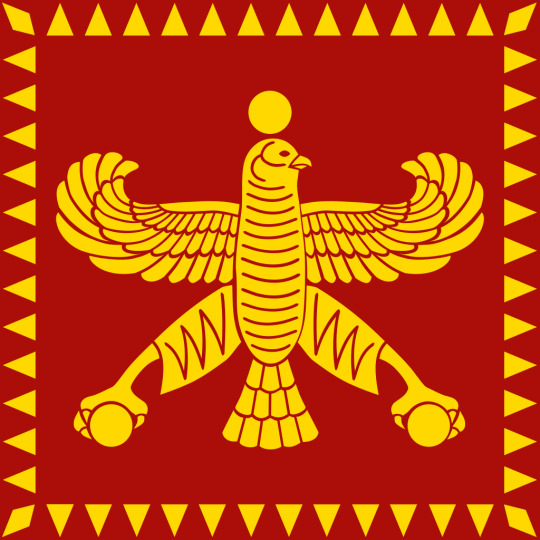
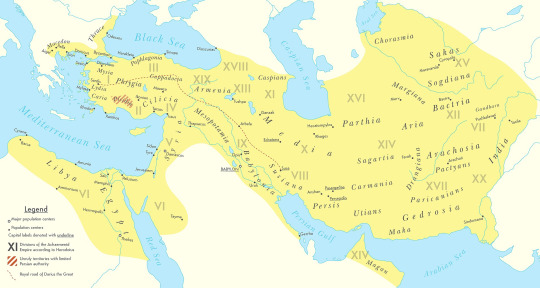


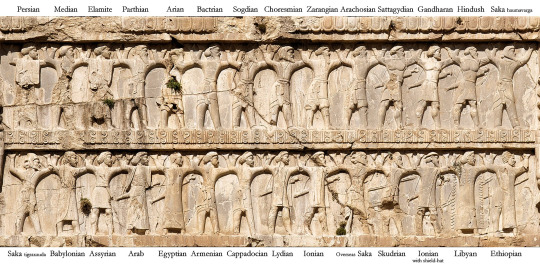
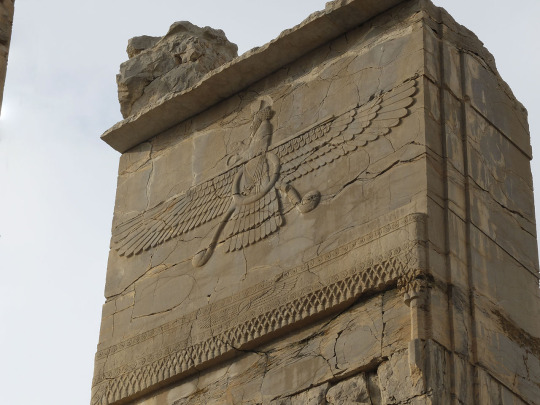




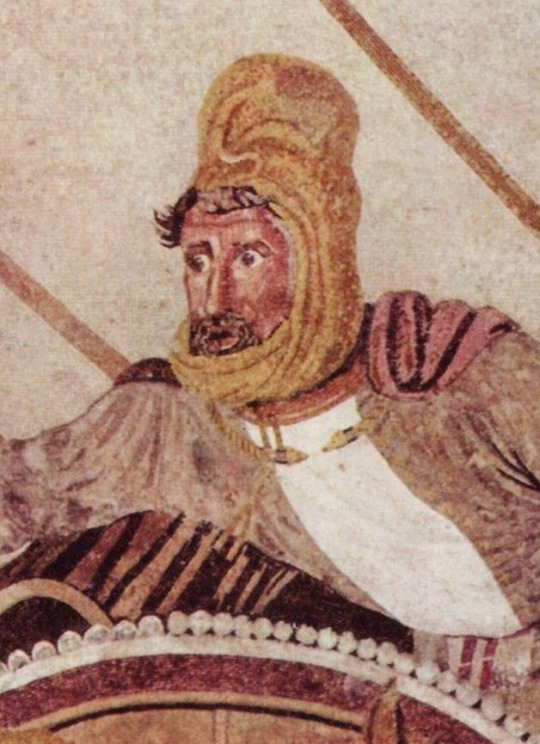
#military history#antiquity#iran#greece#ancient greece#classical greece#ancient ruins#ancient iran#ancient persia#achaemenid#persia#zoroastrianism#alexander the great#cyrus the great#xerxes#artwork#government#history#persian empire#ancient egypt
92 notes
·
View notes
Note
What are your thoughts on the seer Kaeya theories that were going around? Cause apparently I have many thoughts that I'm trying to keep from spamming you with lmao basically there's him not being a seer and his network really is that good (but not good enough to tell him about the nations wide treasure hoarder scheme), him being a seer (same issue as before), having only vague premonitions (which is funny cause he uses them as stories to spook kids), or he DOES have seer information it just isnt his own (second hand and why he had to lure out Dain for confirmation). Each have some merits but all still have some pretty glaring issues as well that it's hard to tell which way the story is going to go.
oh i have MANY thoughts about this (warning: it's a long read)
IS KAEYA A SEER?
PART 1: HINTS OF OMNISCIENCE
from the very beginning we are told and shown kaeya is very knowledgeable.
勇敢的小伙子班尼特对这位无所不知的大哥信赖有加.
Bennett, a brave young man, has a lot of trust in this big brother who knows everything.
in kaeya's official chinese profile, bennett trusts kaeya as his omniscient big brother.
kaeya's constellation is a peacock. the tailfeathers of peacocks have spots resembling eyes. kaeya's namecard in cn hints at kaeya having many eyes…
孔雀漂亮尾羽上的花纹很像是永不闭上的 眼睛。所以凯亚并非少了一只眼睛,而是
The patterns on the beautiful tail feathers of a peacock resemble eyes that never close. So Kaeya isn't missing an eye, rather... [he has many of them].
fischl's voiceline about kaeya is as follows:
Fischl: His nature is obscure, his fate a mystery, and his speech a vexing tapestry woven of both fact and fiction… Perhaps he and I share the burden of mystical sight…
NOW i want to make it clear that fischl is actually important to understanding kaeya. kaeya is in part based on the indian prince baby from midsummer night's dream. midsummer night's dream in german is mittsommernachtstraum, which is the inspiration behind the name of fischl's princess outfit, immernachtstraum. princess fischl seems to have existed in teyvat, as seen in the description for midsummer courtyard:
With the fall of the ancient lost civilization, the once prosperous and magnificent Sommernachtgarten was also buried underground, leaving only its ancient trees and stones to remember its past glory.
sommernachtgarten is in turn mentioned in the book flowers for princess fischl. this book is published by yae's publishing house just to add more to how suspicious this all is.
what the connection here is, i really cannot say, but for now fischl's voiceline about kaeya should NOT be taken for granted.
PART 2: SEER, POET, KING
let's look into the possible meaning behind the name "kaeya".
MANDATORY DISCLAIMER: there are many possibilities for what "kaeya" might mean so please don't take any of this as fact. however, i have no doubt the creative team are aware of the many meanings behind his name and could possibly be playing around with that. i would too, if i were a writer.
some of sumeru's mythology draws inspiration from the shahnameh, the book of kings, which is a persian epic. in kaeya's hangout he plays prince qubad, opposite frasiyav. i have talked about this before, (see: the bottom reblog) and how i suspect frasiyav might represent irmin. i believe qubad's namesake is either kay qubad or kay qobad. however, the character kaeya is playing is based on siyavash, son of kay kavus, (and future son-in-law of frasiyav 👀 but let's leave that discussion for another time). these are all characters from the shahnameh. siyavash and qobad belong to the kayanians.
KAYĀNIĀN (Kayanids), in the early Persian epic tradition a dynasty that ruled Iran before the Achaemenids, all of whom bore names prefixed by Kay from Avestan kauui
so, could "kaeya" actually be derived from this dynasty's epithet "kay"? let's take a look at what kauui can mean:
As an epithet of kings and the reason the dynasty is so called, Middle 𐭪𐭣 and New Persian kay(an) originates from Avestan 𐬐𐬀𐬎𐬎𐬌 kavi (or kauui) "king" and also "poet-sacrificer" or "poet-priest".
Kavi is the Indo-Iranian term for “(visionary) poet.”
i'm oversimplifying it but basically kay can stand for seer, poet, king (not to be confused with soldier, poet, king). all of these terms are connected to kaeya.
king: alberich literally means elf king, or ruler of elfs, and kaeya has been foreshadowed to be royalty
poet: kaeya has taken poetry "lessons" from venti and this even comes back up again in his hangout…with venti again
so if we follow the pattern the seer part would also apply to him, right?
Their poems are made by their thoughts (mati, etc.), and they send their “poetic visions” (dhī) into the divine world.
this is very interesting because it reminds me of the venti route in kaeya's hangout titled: Poems Dedicated to the Wind AND of dainsleif's character description. the text is a prophecy in the form of a poem given by a self-proclaimed prophet.
The confluence between the past and future.
The original calamity had been overturned, yet the island in the sky set the earth to burn. Chalk pursues gold, in this time inopportune, the eclipse is swallowed by the crimson moon. The future must atone for bygone mistakes, as the bond familiar falters and breaks— of the same blood, elders and the youth… Such is the cycle of the world, in truth. Dain, what is that strand of blonde hair to you? Someone you must kill? Or the object of your penitence?
—A self-proclaimed prophet.
now, i'm NOT claiming kaeya wrote this or will say this to dainsleif, but my point is that there is a connection between seers and poetry.
(HOWEVER, the fact that the text refers to dainsleif as dain denotes a friendship between the speaker and dain, (remember dainsleif is literally named after kaeya's sword, there's no way they won't become friends), and self-proclaimed prophet implies the speaker isn't well-established as a prophet yet 👀. furthermore, kaeya references the second part of the prophecy (which is likely about him) in his hangout.
Kaeya: History always repeats itself.
Kaeya: Perhaps there's an inept god out there deciding everyone's fates… much like the Akademiya student drafting Darbil's scripts.
Kaeya: Yep, "inept" is a good word for it. Honestly, it might even be a little too civil to describe a god who turns fathers against their sons and is bent on endless warmongering… don't you think?)
now, because kaeya tends to lie a lot, it's hard to tell if he's actually good at writing poetry. the poem he wrote to venti sucked major ass, but since kaeya likes to mess with venti bc he knows he's barbatos, this was most likely on purpose.
the talent books kaeya uses are the same as venti's: the ballad books. here's the description for philosophies of ballad:
Poetry is the soul of the land of the wind. Poetry is the manifestations of the desire to spread the word.
SOUNDS AWFULLY SIMILAR TO WHAT WE JUST ESTABLISHED ABOUT "KAY" AND POETIC VISIONS… getting waaay off track here but i think we can safely connect kaeya to seer, poet, king.
PART 3: THE BURDEN OF MYSTICAL SIGHT
bet you're probably thinking, "seer kaeya needs more evidence than hearsay and etymology". let's think back on it: has kaeya ever shown any hints if foresight? well, that's a bit harder to figure out. it certainly does seem as if kaeya knows more than he should. before we go any further, i propose two interpretations of seer: a prophet OR someone who can see beyond the limitations of the world, like a melusine.
alright, let's list all the times kaeya showed off his huge brain:
a) he knows venti is barbatos. to be fair, this isn't that hard to figure out for anyone who looks too closely; venti is complete shit at hiding his identity. but the question of how and when exactly kaeya came to this conclusion remains unanswered.
b) kaeya could sense the abyss mage in the temple of the wolf but the traveler and paimon did not. in the same vein, he could also sense dainsleif spying on him. this might have something to do with the corruption or some type energy inside of them, but who knows, maybe kaeya has eyes in the back of his head. edit: muted-honey pointed out that back in the windblume festival, kaeya could sense a suspicious individual (rosaria) behind him from his right side 😮💨
c) kaeya probably knew alice was the one who was behind the golden apple archipelago from the start. also not that hard to figure out, plus he's met her before so he knows what she's like. but then why did he pretend to be in the dark the entire time?
Kaeya: Huh? Did I ever guess what was going on, you ask?
Kaeya: Haha… not a chance. I'm much too naive, I was in the dark the whole time.
WHO WOULD EVEN BELIEVE THIS OBVIOUS LIE 😭
d) the tcg cards. hoo boy. kaeya left a deck of cards inside the cat's tail for the traveler to use, apparently he didn't even touch the cards.
Diona: Uh, a customer left it behind a few days ago. But he wasn't even playing the game while he was here.
Diona: Eh, it's already been a few days and he still hasn't come back to claim them. Who knows, maybe he left them here on purpose…
this is never explained or brought up again. how did he know the traveler would need a deck of cards??? WHY DID HE EVEN DO THIS???!
e) kaeya knew idyia was an oceanid all along. nothing groundbreaking here, but kaeya's attempts to downplay his perceptiveness is reminiscent of the alice situation.
Kaeya: So our General was the first to notice? It seems like she's more perceptive than she lets on…
Eula: I'd say the same about you, Kaeya.
f) kaeya was expecting the the traveler to show up in the caribert quest. this is also never explained or brought up again. he even went so far as to wait every single day for them to show up. this is interesting because it could mean that whatever foresight kaeya received simply isn't detailed enough. think the stone slates from the fontaine prophecy; it only showed the stopping points but not the journey.
g) if you pay close attention, kaeya mentions luck/chance/fate a LOT. especially when he runs into the traveler, like 'how unexpected', 'didn't expect to see you here' etc. i'm not going to go back to collect every instance, but trust me it's enough that it reaches mona levels. even his death voicelines reference this…
Fallen II: That was unexpected…
yeah why was that unexpected kaeya? because you already know you're not supposed to die yet or what?
PART 4: NABU MALIKATA, NICOLE, AND KHAENRI'AH
now let's go back to the kayanians again, because there is something very interesting about them…
The word is also etymologically related to the Avestan notion of kavaēm kharēno, the "divine royal glory" that the Kayanian kings were said to hold.
kavaēm kharēno means khvarenah. the kayanians possess khvarenah! i already go a bit in depth here about the in-game notion of khvarena and how kaeya or his mother could've possessed this.
the tl; dr is that khvarena are born from nabu malikata's body. this was then fashioned into a divine bird which i only recently found out could've been a peacock. (see the post i linked, specifically the addition.)
this is important, not only because kaeya's constellation is a peacock, but because NABU MALIKATA was a prophet, nabu even means prophet!
IF kaeya has the khvarena inside him, could he be able to divine the future as well, albeit to a lesser extent than a visionary?
so that's the nabu malikata of it all, let's move on to nicole. as you know, nicole's teacups are found in dawn winery. i do believe this a deliberate choice: every other witch is given an incredibly elaborate looking teacup but for nicole they chose to reuse the dawn winery teacups.

then they even put kaeya in the same shot with the teacup during his hangout! could not have dropped a bigger hint here!
nicole is a visionary, a guide, a disembodied voice, could it be that she is actually whispering in his ear, occasionally providing him information? it doesn't seem likely as nicole only shows herself when a significant change has occured, but we can't rule out the possibility just yet. or is the teacup simply a hint that like nicole, kaeya is omniscient?
now about khaenri'ah… don't take my word for it but i believe khaenri'ah could be derived from "priestess/priest of the winds" in arabic.
priest of the winds (kahin riah) كاهن رياح
priestess of the winds (kahinat riah) كاهنة رياح
most likely they chose this because of the anemoi gods (the cardinal winds) being attested as "priestess/prophetess of the winds" in mycenaean-greek.
The earliest attestation of the word in Greek and of the worship of the winds by the Greeks, are perhaps the Mycenaean Greek word-forms 𐀀𐀚𐀗𐀂𐀋𐀩𐀊, a-ne-mo-i-je-re-ja, 𐀀𐀚𐀗𐄀𐀂𐀋𐀩𐀊, a-ne-mo,i-je-re-ja, i.e. "priestess of the winds".
it says priestess but ijereja can also mean PROPHETESS. does this also not remind you of what we discussed before, of the poems/visions written to the wind?
khaenri'ah does have connections to divination. king irmin is based on odin. odin hung himself from the world tree yggdrasil to gain extensive knowledge about the world, sacrificing his eye in the process. the description for the quest item silver twig references this legend;
"Trees" also symbolize wisdom. In one of the legends, a sage hanging upside down on a tree had acquired the knowledge of how to inscribe runes and control sacred words, and thus followed the kingdom established along the tree's roots, eventually gaining a glimpse of the secret of the cosmos.
now based on what we know of odin, i think this sage was irmin and not deshret. HOWEVER, we should take note of how the sage's gender is made unclear… 👀 in any case, this makes it likely irmin posesses foresight, or at least acquired the means to divination. is kaeya covering his eye a hint that he's in a similar situation?
looking at the other khaenri'ahns we have in game, it seems pierro is also quite knowledgeable. however, one explanation could be that he's using columbina to divine the future since she's a seelie like nabu malikata.
dainsleif claims to have knowledge of fate itself and i think it has to do with the blue irminsul lines on his body… these lines resemble the branches of irminsul and the dragon queller, azhdaha's tail. in the description for the dragon-queller, they call this energy moonlight.
A strange tree whose branches flow with clear, cold moonlight.
we've established kaeya attracts crystalflies towards him, and crystalflies are drawn to elemental energy and leylines… should be noted that a TON of crystalflies can be found in the vourukasha oasis, which is filled with khvarena. if dainsleif is infused with this irminsul "moonlight", could kaeya also possess this then?
if he does could this be why he has extensive knowledge of many things? why he could sense dainsleif and the abyss mage? why he was placed in mondstadt (moon city)?
back to your original question: is kaeya a seer? let's review the evidence presented to us:
characters call him omniscient or suspect he is
kaeya's name could mean seer
kaeya is VERY observant, to the point where it seems like he has 4D vision, but attempts to downplay it
kaeya is connected to several important figures who are prophets
that being said, i can't confidently say kaeya is a seer… but based on all of this, it would be pretty weird if he wasn't.
#.txt#kaeya alberich#lore bytes#this got really long sorry also dw about sending me spam messages even if it takes me eons to reply i read them all!#it's not spam if it's about kaeya
22 notes
·
View notes
Note
do you have any resources on mesopotamian iranian syncrestism? also correct me of I'm wrong but a lot of these happened during the achaemenid and parthian periods but not so much during the sassanid period? (if you exclude the selucids as an "iranian" dynasty)
I do not have much, but it's a topic I'm looking into currently, though I will admit I am largely just focused on Tishtrya for the time being (tbf, Thistrya is arguably the most major example of this save for outright incorporation of Mesopotamian deities). Given that the Central Asian evidence goes all the way up to 7th (or in some cases even 10th century) I would say it's fair to say that Sassanian sources can still be useful, also. Even if the kings and clergy became quite dogmatic.
What I have to offer so far:
-Intangible Spirits and Graven Images: The Iconography of Deities in the Pre-Islamic Iranian World by Michael Shenkar, particularly important due to high degree of caution on the author's part. He points out that ex. the often repeated frankly nonsensical Nana = Anahita claim is pure vibes, and the other offered explanations for Anahita's lack of importance in the east are more substantial. He also wrote two articles which are somewhat relevant: Royal regalia and 'Divine Kingship' in the pre-Islamic Central Asia (a bit far-fetched imo), and The Religion and the Pantheon of the Sogdians (5th–8th centuries CE) in Light of their Sociopolitical Structures
-Nana and Tish in Sogdiana and The So-Called “Pelliot Chinois 4518.24” Illustrated Document from Dunhuang and Sino-Sogdian Iconographical Contacts by Matteo Compareti
-My Lord with his Dogs. Continuity and Change in the Cult of Nergal in Parthian Mesopotamia by Lucinda Dirven - more reception than syncretism but I think this still counts, that's really what the Nana(ya) case discussed in the papers above is too after all.
-The Revival of the Anu Cult and the Nocturnal Fire Ceremony at Late Babylonian Uruk by Julia Krul briefly discusses the possibility of Ahura Mazda-Anu syncretism, but I've seen opposition to this proposal elsewhere.
-Other Gods Who Are (there's a copy floating online but it misses around 100 pages for some reason) and The Heartland Pantheon by Wouter Henkelman touch upon mostly Elamite but also some Mesopotamian religious influence on early recorded forms of Persian religious practice. Once again, more reception than syncretism though.
I will try to update this post if I'll find anything else useful.
20 notes
·
View notes
Text
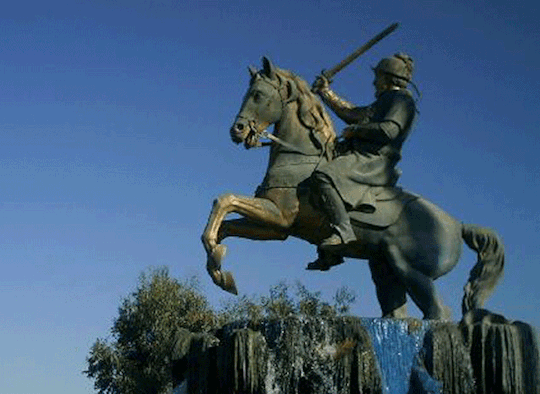


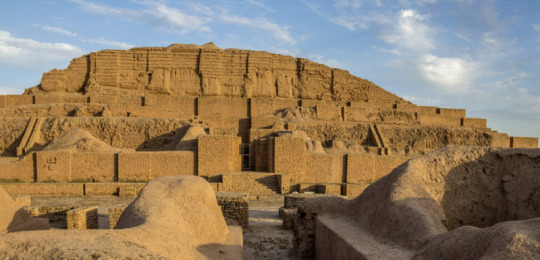
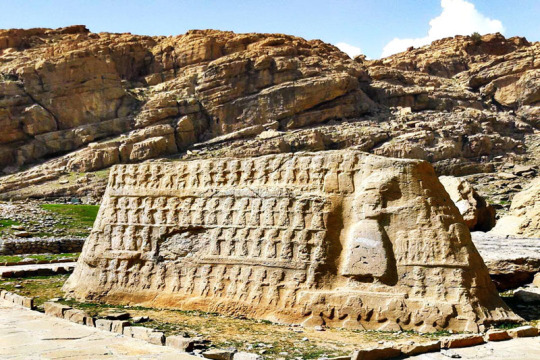
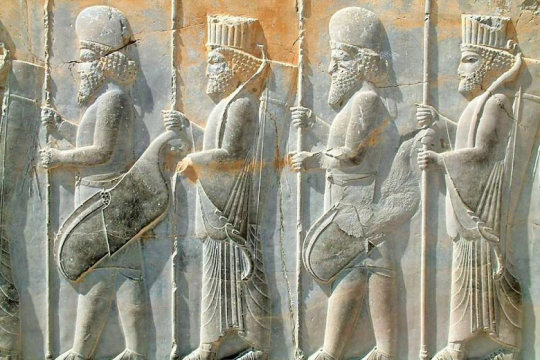
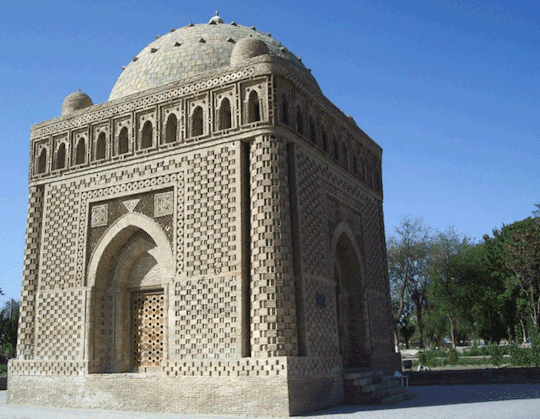


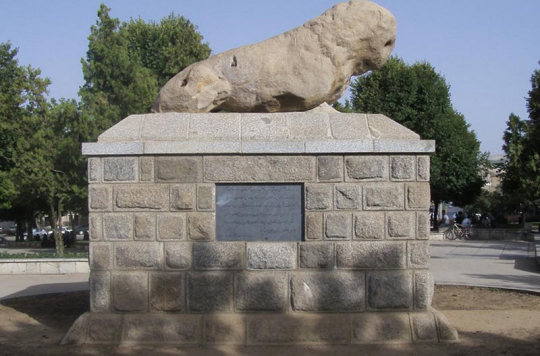
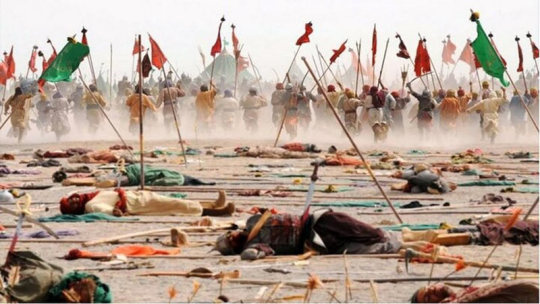
Who was the founder of the first central government in Iran?
The founder of the first central government in Iran dates back to the Achaemenid period by Cyrus the Great. Achaemenid Cyrus was crowned in 550 BC and established the first central government in Iran.
The origin of the name Iran
The country of Iran was not called "Iran" from the beginning and was known by the names of Persia, Pars and Pers among others. Saeed Nafisi suggested the word "Iran" instead of "Persia" in January 1313 AH. The naming initially caused opposition. Because the politicians considered "Persia" as an international name that was familiar among all types. The supporters of this naming also considered the term "Iran" as the best name to describe the political authority and cultural background of this country.
In 1314 AH, based on the circular of the Ministry of Foreign Affairs of Iran and the request of the then government of Reza Shah, the word "Iran" was officially used to name the country and replace other names. Professor Arthur Upham Pope, an American Iranologist, writes in the book Masterpieces of Iranian Art translated by Parviz Natal Khanleri:
The word "Iran" was used for the plateau and geographical functions of Iran in the first millennium BC.
According to Mohammad Moin, the great Iranian writer, the origin of the word "Arya" is so clear that the eastern part of Indo-Europe considers themselves proud of this name. Indo-Iranian common ancestors also introduced themselves with this name and named their country as "Iran-Oejah".
Pre-Islamic era in Iranian history
The pre-Islam era, which includes various events in the history of Iran, includes the time period before the arrival of the Aryans, that is, the rule of Elam until the end of the Sassanid rule and the arrival of the Arabs in Iran. According to historical sources, before the Aryans entered Iran, the Elamites lived as a native dynasty in the Iranian plateau.
The Elam dynasty was formed in the southwestern region of the Iranian plateau around 3,000 years BC, and they named their territory "Hatmati". The rule of Elam expanded during the period of the famous kings of this dynasty, and they dominated parts of Mesopotamia (Mesopotamia) in addition to southwestern Iran.
Whenever the Elamites gained more power, they played an important role in the Middle River politics. They overcame Sumer around 2,000 BC and completely subjugated the Mesopotamia. Historians divide the political history of Elam into three periods:
Ancient Elam, Middle Elam and New Elam
The migration of Aryans to the Iranian plateau
In the third period of the rule of Elam, the Medes, as a group of Aryans, established their power in the northwest of Iran and took control of that part of Iran. The Parthians (Ashkanians) and the Persians (Achaemenians and their successors, who were called the Sasanians) were two other Aryan tribes who formed a government in the Iranian plateau after the Medes.
There are many theories about the ethnicity, race and migration of Aryans and their entry into Iran, which are the source of disagreement among scholars and have not yet reached a single conclusion about them. Some consider Siberia as the origin of Aryans and believe that they entered the Iranian plateau from there.
The post-Islam era in Iranian history
Yazdgerd III, the last Sassanid king, was defeated by the Arabs and left Iran to them. "Rostam Farrokhzad" was defeated by the Arabs in the battle of Qadisiyah (636 AD) and lost his life despite his bravery. He organized his forces and was defeated by the Arabs in the war that took place in Nahavand (642 AD). Yazdgerd fled to the East with his family and was killed near Merv. With the death of Yazdgerd III, his empire fell in 651 AD.According to the book "Two Centuries of Silence" by "Abd al-Hossein Zarinkoub", some Iranians were not satisfied with the arrival of Arabs in the country and continued to adhere to the Zoroastrian religion. Zoroastrian Iranians paid tribute to music during this period. According to Zarinkoob, Iranians do not accept Islam with open arms and during this time, they were fighting with the Arabs in the corners and sides of Iran in order to advance them. On the other hand, Shahid Motahari criticized Zarinkoub in his book "Mutual Services of Islam and Iran" and did not consider his opinion to be scientific. He believes that Iranians accepted Islam with open arms.
The land of Iran gradually surrendered to the Arabs and only Tabaristan and Gilan maintained their independence by resisting. During this period, government powers did not rule in Iran and local governments have power in some parts of Iran.
The domination of Arabs over Iran caused their culture to be revealed in Iran, and with the beginning of independent Islamic governments in Iran, the Hijri lunar calendar, the foundations of historians in writing the history of Iran, was published.
contemporary history
World War II brought chaos to Iran and Reza Shah resigned from the throne. Mohammad Reza succeeded his father in 1320 AH (1941 AD). The creation of the 14th Parliament, the nationalization of the oil industry, the withdrawal of Soviet forces from Iran after the end of World War II, the August 28 coup, the Baghdad Pact, and the formation of the Iranian National Front were among the most important events of this period.
With the formation of the Islamic Revolution in 1357 AH (1978 CE), the life of Pahlavi rule ended and the Islamic Republic replaced it.
11 notes
·
View notes
Note
Hello!! I loved chapter 9! As a law student who's really into political science, I must say I really enjoyed the description of the arsurian's political system! Can I ask you if you studied specific political systems to imagine it ? And if so, which ones ? In any case, it was very interesting to be able to read something so detailed, and being able to make some big political choices as well. Thank you for this wonderful chapter!
I'm glad so you enjoyed the political worldbuilding!! ✨
It'd be a huge problem if a story within the courtly intrigue genre couldn't set up its political system well after all lol.
Basically, a lot of the structure of Arsur's political system is one I based on the historical Ancient Persian Empire, especially the Achaemenid dynasty.
The Achaemenids had a very sophisticated, centralized imperial bureaucracy, necessary due to the large amount of land governed by the king. The king can't be everywhere all at once, after all, so satraps (this word should ring a bell) were appointed to oversee the conquered vassal states. However, the Achaemenids maintained a multicultural policy of allowing these vassal states to keep their traditions, religions and customs so long as appropriate taxes and tithes were paid to the king.
The power of the empire was centralized in the king's court. This court typically was composed of the highest ranking officials and bureaucrats in the land, as well as representatives of the satrap to keep the king up to date on happenings within the various provinces of the empire.
A lot of the articles I've read on this topic have been in broad lines, since there aren't many detailed descriptions of the exact functioning of that time period. At least, not in English. I basically used the structure as an overall frame, and filled in the details myself--a lot of the names of the bureaucratic offices in the story and their functioning are ones I came up with myself, after considering what else a government would need to function.
I did a year of law school myself and took a few courses in poli sci, plus studying bureaucratic systems from a sociological perspective, so all that definitely helped me as well.
120 notes
·
View notes
Note
Challenge! Name five curiosities or interesting facts about ancient Iran! *Just* five>:) Oh yes, I'm evil.
- N💚
Hooray! And you evil thing you.
Fact #1: The first ever instance of recorded human rights is in ancient Iran! You could say they invented it. It was introduced by Cyrus the Great during the Achaemenid empire, and he wrote it down which is now called the Cyrus Cylinder.
Fact #2: Zoroastrianism was the state religion and native religion of the ancient Iranians! It is the oldest monotheistic religion, believing in a God called Ahura Mazda.
Fact #3: Iran has a mythological history that Ancient Iranians (Sassanian Dynasty) believed in. The first dynasty is the Pishdadian dynasty and the second is the Kayanian dynasty. These are mythological and not real dynasties!
Fact #4: Zoroastrian priests (Magi) were quite unique and different from priests of other nations. In zoroastrianism, there is a class of animals that are seen as good to kill (khrafstra). It included: frogs, reptiles, scorpions, insects like ants or wasps.
Fact #5: The achaemenid dynasty Iranians engaged in proskynesis, which means bowing before someone of superior rank. The ancient Greeks found this to be ludicrous as they only engage in proskynesis for deities. This led them to believe the ancient Iranians worshipped their kings as Gods, but this was just not true. It was simply an element of their court ceremony.
3 notes
·
View notes
Note
Okay okay so I'd love to hear about Brother!
EEE! I love this one. So, Brother (Brother and the Bowman) is a historical thriller set in Ancient Persia, pre-Achaemenid dynasty. The main character, Darayan, is a prince of the Pasagardae. When a mysterious enemy disguised as the Pasagardae's allies infiltrates the kingdom and attacks, Dar and his brother, Sasan, must work together to find the mastermind amidst the chaos. No one is who they seem, and it's only a matter of time before Darayan realizes what a terrible mistake he's made, thanks to his thirst for vengeance.
Lots of court intrigue, battle strategies (which I'm looking forward to, since it's all much different to the medieval and renaissance strategies in the previous works), and some romance, too...and making the world a better place through the arts.
The ride was different from the previous day’s; the habitual song Sasan always hummed died on his lips, the perpetually cheery smile faded away. Even the forest itself seemed to be holding its breath as they searched for Rhinnish scouts.
“Look,” Sasan mouthed, pointing up ahead. Dying embers glowed in a thicket up ahead, the remains of a campfire. Darayan smiled, nodding to his men. They raised their bows, training them on the sentries leaning against the oak trees. They gasped and gurgled before falling still. Arrows bristled from their throats, pinning them to the trunks.
“Stay back, guard our flank,” Darayan ordered Sasan before riding forth.
Darayan charged through the thicket, bow singing the song of war, of death and chaos. Many of the Rhinns were still abed at this hour; Darayan and his men subdued them with minimal injuries. When the camp fell silent, Darayan dismounted.
“Search for clues,” he ordered, kneeling before a body. The Rhinn’s dull, lifeless gaze was fixed on the sky, unseeing. Darayan gently closed the man’s eyes with a shudder.
“I’m sorry,” he murmured to him, “but it was either you or my people.” He turned the man’s head, brow furrowing. Rhinns were famous for their skin writing, bearing sacred tattoos to bless themselves; such ‘perpetual prayers,’ as they called them, ensured they never ceased honoring the gods. This man’s sacred wind motif started on his chin and spiraled down his neck in a black paisley— and promptly stopped, half-formed, under his necktie.
That…wasn’t right.
“Did he…draw that on?” Sasan asked, peering over Darayan’s shoulder.
Daraya rolled his eyes, “did I not ask you to stay back? I swear, you never listen.” He ran his thumb across the black lines, frown deepening; none of them smudged. They were too dark to be henna; whatever this was, the design was in the skin, not on top of it, like eye kohl.
“Perhaps the tattoo wasn’t finished,” he replied after consideration, “they use needles to make the designs, I understand. Perhaps too much work on his throat could render him speechless.”
Sasan swallowed hard, hand going to his neck, “ugh! Why can’t they just wear embroidery, like normal people? So painful.”
#wip#wip titles game#brother and the bowman#original fiction#ancient persia#darayan#sasan#historical fiction#my writing#musetta writes
9 notes
·
View notes
Text
People hated it when Mr Stevenson was in the pub during the pub quiz. He was an unpleasant, smug smart-ass. As a teacher at the exclusive public school, he definitely felt like something better. His greasy hair, shapeless figure and old-fashioned clothes did nothing to change that. Mr. Stevenson was simply an unsympathetic person in every respect. And that was why all the visitors to the pub had decided that something had to change. Something fundamental.
"Which ruler founded the Achaemenid dynasty?" asked the moderator of the quiz duel. And again, Mr. Stevenson answered smugly as well as recklessly, "Achaimenes, of course. Otherwise it wouldn't be the Achaemenids, would it?"
"Congratulations!" exclaimed the bartender. "There's a special prize for answering that question!" He handed Mr Stevenson a polo shirt. "Would you do us the pleasure of trying it on right away?"
Even more than showing other people how stupid they were, it pleased Mr Stevenson to get something for nothing. He had also been delighted to get his apple juice for free after the bartender had stained his already coffee-stained shirt while pouring it. Perhaps it was quite appropriate to put on a fresh polo shirt now.
Mr. Stevenson took the polo shirt without a thank you, went to the toilet, took off his shirt and put the polo shirt on over his old stained vest. But instead of the vest, there was suddenly a heavy silver chain. And the rest of his clothes changed too.
"'Can I take a piss right now,' Buck thought to himself. He unbuttoned his jeans and took his magnificent cock out of his jockstrap. On his way back to the bar he was annoyed that it was the pub quiz again. Then the pub was full of arrogant know-it-alls. He was here to have a beer and watch football. He was a caretaker at the community school and the captain of the local rugby team. He didn't need to know all that shit.

"What name was the King's grandmother known by," was the next question. "The Rottweiler?" wondered Buck. He had no idea. Hopefully the other lads from his rugby team would arrive soon, then they could at least enjoy the evening having a beer or two.
And again, a post by @stargazerguy was the motivation!
82 notes
·
View notes